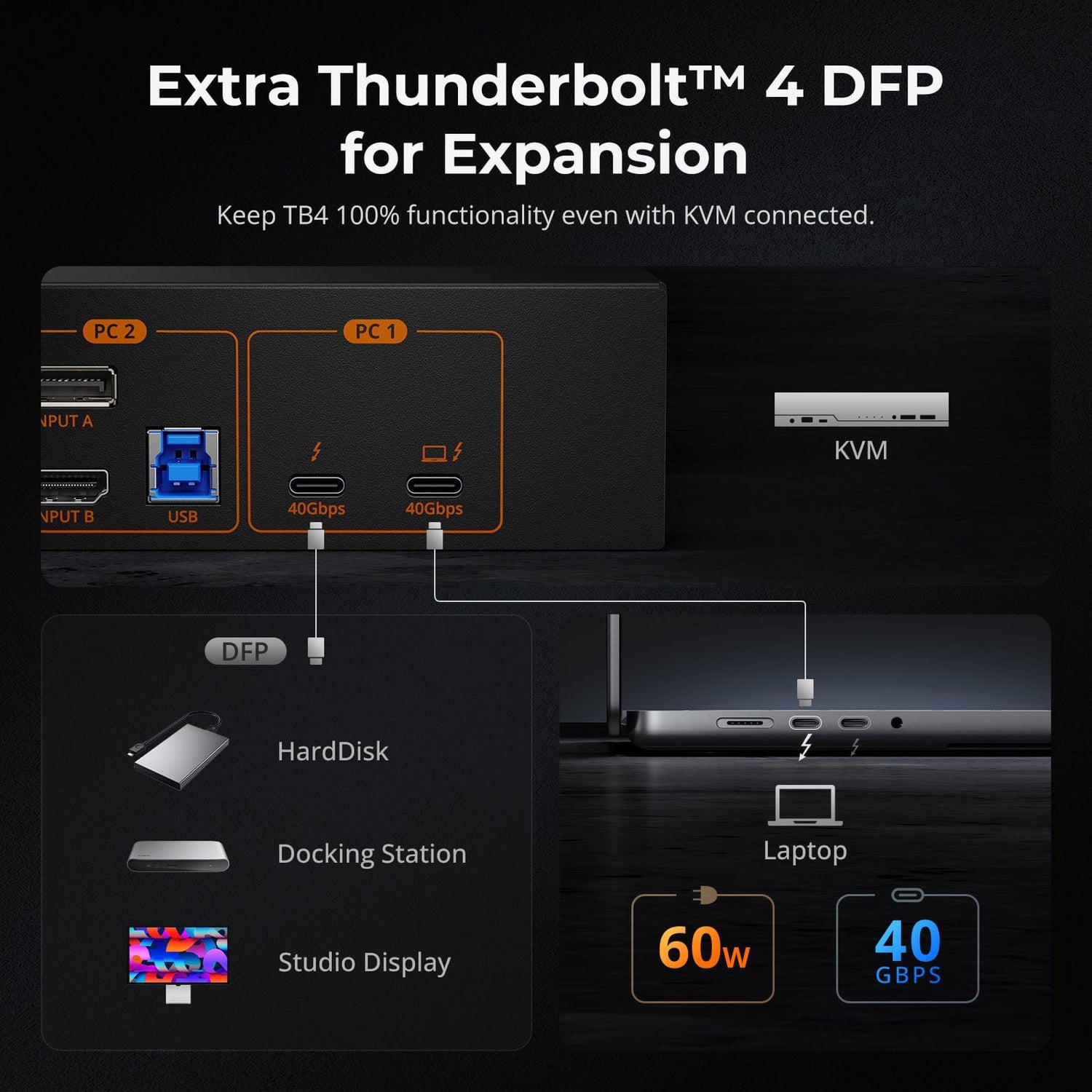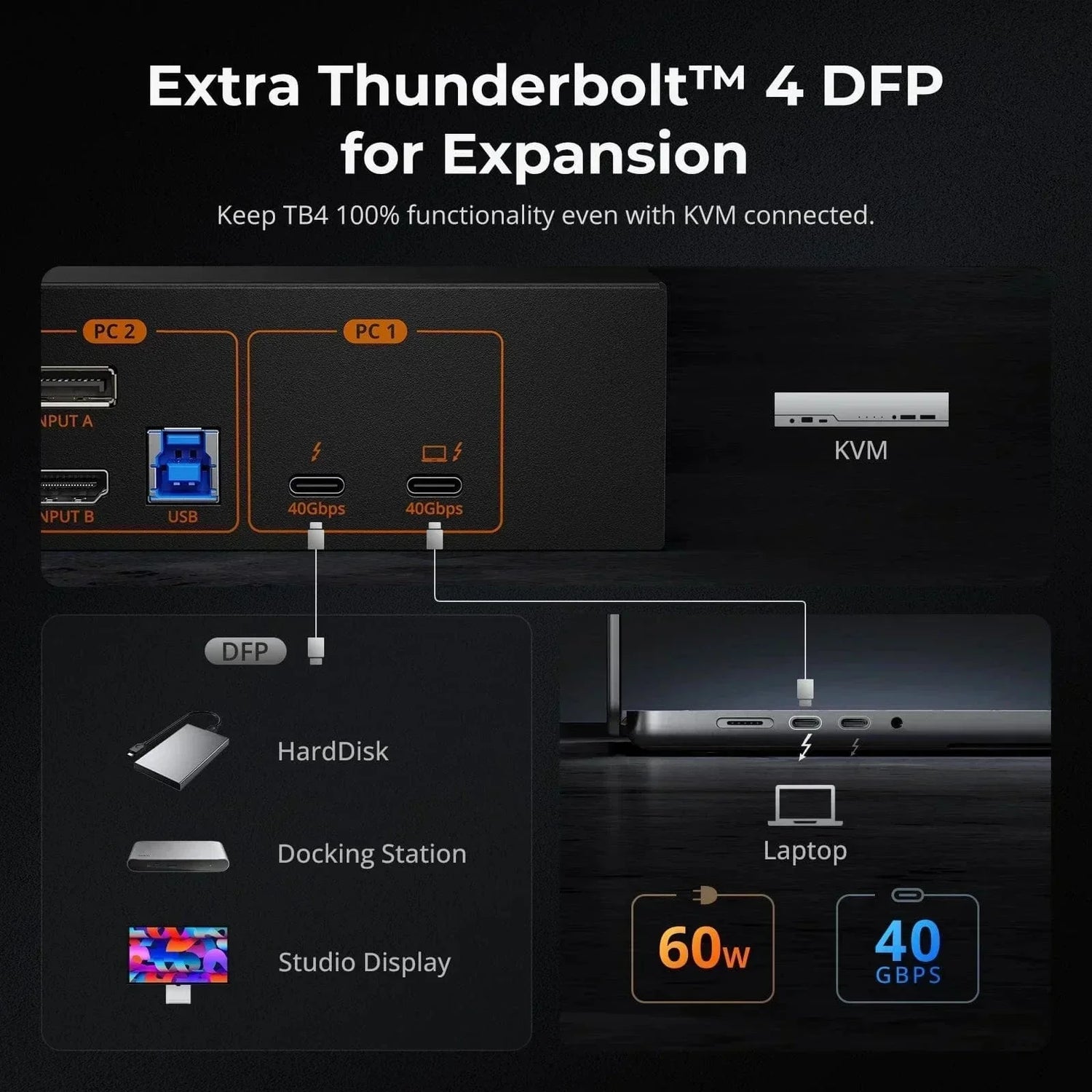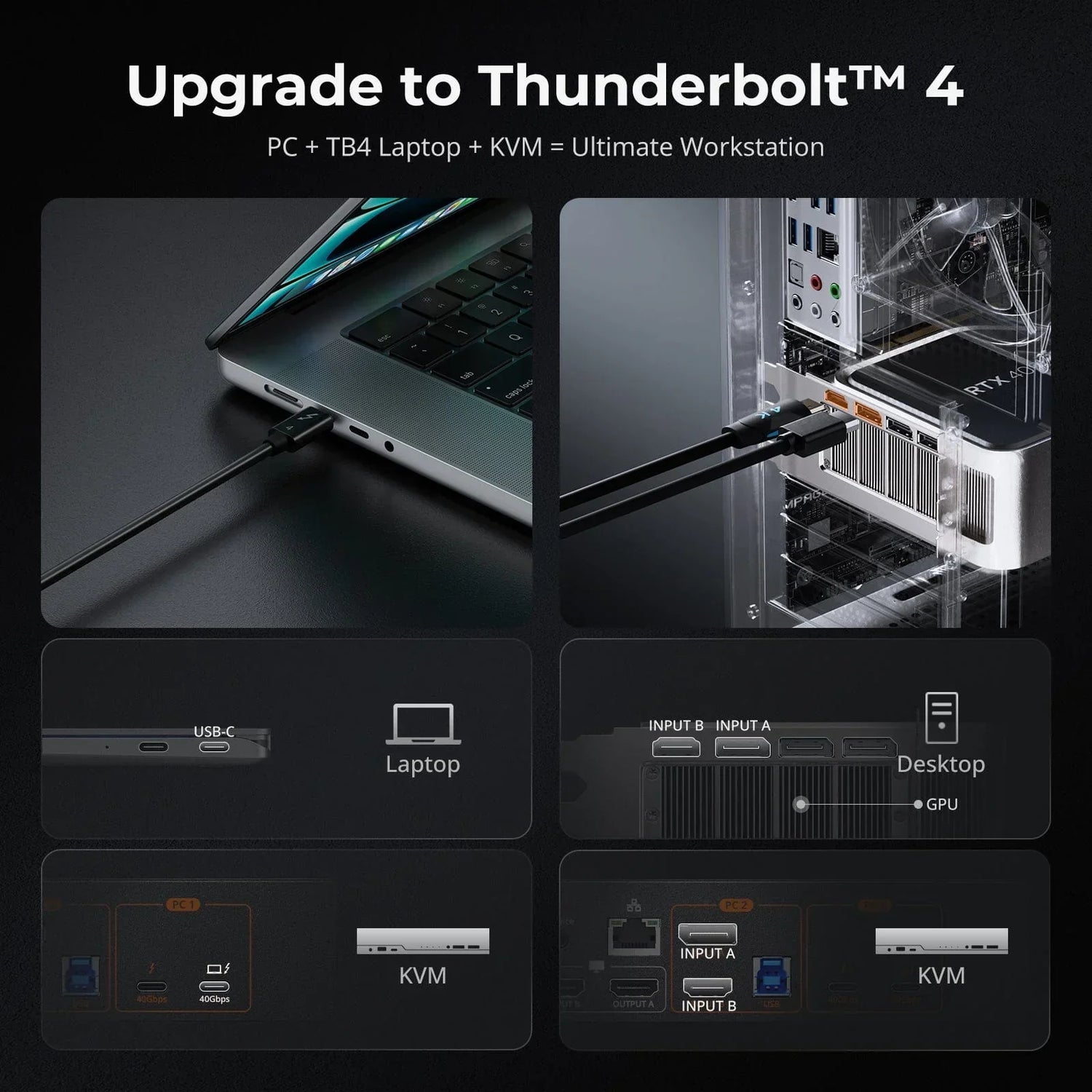Over 12 billion devices with HDMI (High-Definition Multimedia Interface) technology have been made since its release. The latest HDMI 2.1 specification (8K cable) supports new product categories and innovative solutions for enhanced consumer experiences. As HDMI being the most frequently used interface for audiovisual industry, there is still a lot to consider before selecting the right interface for our devices.
What is HDMI?
HDMI stands for High-Definition Multimedia Interface, which is a proprietary interface for transmitting high definition audio/video data over a single cable. For it to be connected to our AV system, we simply use an HDMI cable to connect the input from our source (laptop, PC, Nintendo, etc.) to our HD display (monitor, TV screen, projector, etc.).
How HDMI Evolved?
HDMI was first introduced in 2002 by a consortium of electronics manufacturers, including Sony, Philips, Toshiba, and Panasonic. Before the development of HDMI, interfaces like Composite AV, SCART, and VGA could not transmit audio and video signals over a single cable, and they were typically separate connections. Even though there were other interfaces capable of transmitting audio and video signals using a single cable, HDMI prevailed over them and became the most popular choice.
How Does It Make the Connection?
When connecting devices using HDMI, users simply plug one end of the cable into the HDMI output port of the source device (such as a DVD player), and the other end into the HDMI input port of the display device (such as a TV). The interfaces on the input source and the display device are called receptacles (female connectors), while the interfaces on the connecting cable are plugs (male connectors).
The HDMI connector is characterized by its compact size and shape, and typically features a trapezoidal design with a flat bottom and slightly rounded top corners, with multiple pins arranged in a specific configuration within the connector housing. There are different types of the HDMI connector available in the market. They come in three sizes: Standard HDMI connector (Type A), Mini HDMI connector (Type C), Micro HDMI connector (Type D). Among these, the Standard HDMI connector (Type A) is predominantly favored by users and manufacturers over the other two types.
HDMI Standard Versions
|
Version 1.0 |
4.95 Gbps/s |
1080p |
60Hz |
8-bit |
× |
× |
|
Version 1.1 |
4.95 Gbps/s |
1080p |
60Hz |
8-bit |
× |
× |
|
Version 1.2 |
4.95 Gbps/s |
1080p |
60Hz |
8-bit |
× |
× |
|
Version 1.3 |
10.2 Gbps/S |
1080p |
60Hz |
8-bit, 10-bit, 12-bit 16-bit |
× |
× |
|
Version 1.4 |
10.2 Gbps/s |
1080p, 4K |
30Hz, 60Hz |
8-bit, 10-bit, 12-bit 16-bit |
× |
× |
|
Version 2.0 |
18 Gbps/s |
1080p, 4K |
60Hz |
8-bit, 10-bit, 12-bit 16-bit |
× |
× |
|
Version 2.1 |
48 Gbps/s |
4K, 8K |
60Hz, 120Hz |
8-bit, 10-bit, 12-bit, 16-bit |
√ |
√ |
● HDMI standard version indicates the features and capabilities supported by the cable. Newer HDMI standards often introduce improvements and additional features to accommodate advancements in video and audio technologies.
Active HDMI Cables vs Passive HDMI Cables
Active HDMI usually contain built-in electronic components, such as chips or amplifiers. These cables can provide signal amplification or processing functions to ensure that the signal does not degrade over long-distance transmission.
Passive HDMI cables do not have built-in electronic components. They are simply conductive wires for signal transmission. These cables lack signal amplification or processing functions and are typically suitable for shorter-distance connections, such as between a TV and a DVD player.
Factors Influencing HDMI Transmission
Connectors
More costly cables have stronger connectors. When you purchase the cable, you definitely want to be able to use it again. Certain cheap HDMI cables may fail after a few plugging and unplugging cycles. The internal connector on the cable may have poor connections to the wires and may disconnect, making the cable useless.
HDMI Specification Certified
The reason behind the existence of HDMI specifications is to ensure a standardized approach to transmitting audio and video signals. These specifications require extensive testing and evaluation to become official. Cheap cables are usually not formally HDMI certified. When a manufacturer makes a cable based loosely on the HDMI specification, there's a risk of having issues with the cable.
Gauge
Part of the HDMI certification process involves ensuring that cables meet a minimum gauge requirement. When using a certified cable, it should meet this standard and perform adequately. A cable that is too thin and fragile may be prone to breaking or causing transmission issues over time.
Length
Digital signals in electronics are represented by 1s and 0s, yet variables like wire length can change these values. Longer cables can weaken the signal, making it harder for receiving devices to interpret the data accurately. Therefore, even if digital signals are strong, it's important to use high-quality HDMI cables and keep cable lengths within recommended limits for reliable transmission.
Different Types of HDMI Cables
|
Specifications |
Standard HDMI Cable Category 1 |
Standard HDMI Cable with Ethernet |
High-Speed HDMI Cable Category 2 |
High-Speed HDMI Cable with Ethernet |
Premium High-Speed HDMI Cable (Category 3) |
Ultra High-Speed HDMI Cable (Category 4) |
|
Bandwidth |
10.2 Gbps/s |
10.2 Gbps/s |
10.2 Gbps/s |
10.2 Gbps/s |
18 Gbps/s |
48 Gbps/s |
|
Standard |
1.4 |
1.4 |
1.4, 2.0 |
1.4, 2.0 |
2.0, 2.1 |
2.1 |
|
Resolution |
1080p, 2K |
1080p, 2K |
1080p, 2K, 4K |
1080p, 2K, 4K |
1080p, 2K, 4K |
1080p, 2K, 4K, 8K |
|
Refresh Rate |
60Hz |
60Hz |
30Hz, 60Hz |
30Hz, 60Hz |
30Hz, 60Hz |
60Hz, 120Hz |
Standard HDMI Cable Category 1 (with Ethernet)
The oldest and lowest-quality HDMI cable is known as Standard HDMI or Category 1 HDMI cable. This cable has a bandwidth limit of approximately 5 Gbps, which can only support resolutions up to 1080i or 720p. It is also typically limited to shorter lengths (under 5 meters) due to signal attenuation issues caused by inadequate shielding.
Today the cable labeled as Standard with Ethernet is still in circulation. This cable is similar to Standard HDMI cable in terms of resolution support (1080i and 720p) but include an Ethernet networking feature. It is commonly used for connecting DVD players, cable boxes, and older gaming consoles (such as PlayStation 3 and Xbox 360) to HDTVs.
High-Speed HDMI Cable Category 2 (with Ethernet)
High-Speed HDMI cable, also known as Category 2 cable, support data transmission at up to 340 MHz with a bandwidth of 10.2 Gbps. This effectively qualifies for handling resolutions of up to 1080p at 60Hz, or 4K resolution at 30Hz.
High-Speed HDMI cable is the minimum requirement for 3D video and deep color (30-bit color), and it generally offers better performance and can run longer distances compared to Standard HDMI cable.
Similarly to Category 1 HDMI cable, High Speed cable may also include Ethernet support, but it's important to ensure that you purchase the correct version if Ethernet functionality is required for your network. It is ideal for connecting Blu-ray players, gaming consoles, streaming devices, and computers to 4K TVs and monitors.
Premium High-Speed HDMI Cable (Category 3)
With the release of the HDMI 2.0 specification, a new certification for Category 3 HDMI cable type was launched, which is Premium High-Speed HDMI cable. It is constructed to a higher quality, with improved EMI shielding, the capacity to handle HDMI 2.0's maximum bandwidth of 18 Gbps, and increased audio channel support.
It not only supports 4K resolution at up to 60Hz, but also new technologies like HDR (high dynamic range) and VRR (variable refresh rate), making it a solid choice for most current 4K applications. It can be used for high-end home theater systems (Roku Ultra and Apple TV 4K) and gaming consoles (such as PlayStation 4 and Xbox One X).
Ultra High-Speed HDMI Cable (Category 4)
The Ultra High-Speed HDMI uses the latest standard HDMI 2.1, designed to meet the demands of the most advanced audiovisual technologies available today. It it up to 48 Gbps bandwidth and capable of handling 8K at 60 Hz and 4K at 120 Hz, along with improved audio and video features. These features allow for better video quality with HDR (high dynamic range), improved audio with Audio Return Channel (eARC), and enhanced gaming features like quick frame transport and low latency mode.
Premium High-Speed HDMI Cable (HDMI 2.0) can also handle 4K resolution, but only at a refresh rate of 60 Hz. While it supports higher refresh rates at lower resolutions like 1080p or 1440p, it has limitations. On the other hand, Ultra High-Speed HDMI Cable (HDMI 2.1 ) offers improved support for high refresh rates at higher resolutions. It allows for resolutions such as 4K at 144 Hz and 8K at 60Hz, providing enhanced performance and flexibility.
Is 8K Cable (HDMI 2.1) Necessary?
As technology advances, the demand for higher resolution and performance increases, especially with the emergence of 8K content and displays. With so many HDMI cable options available, it must be really hard for users to choose the right one. Is the latest standard better? Do all cables perform the same, whether they're working or not? Do you really need high-performance 8K cable for your professional displays?
Most A/V enthusiasts looking to upgrade their TV are wondering if 8K is really worth it. Some TVs (such as Sony 8K UHD TV) now feature HDMI 2.1-compliant ports, the Ultra High-Speed HDMI Cables (8K Cables) will support higher performance standards than the current interface. Also, if you want to enjoy UHD (Ultra-High-Definition) and HDR (high dynamic range) movies from a 4K Ultra HD Blu-ray player, you'll require an Ultra High-Speed HDMI cable, as they are the sole cables capable of supporting 4K and HDR streams without compression or Chroma Subsampling.
For gamers, you may be wondering—What Setup do You Need for Gaming at 8K? With the right setup, you will be the first to take advantage of of 8K cables (HDMI 2.1). HDMI 2.0 cables are necessary for attaining a 4K display at 60Hz. In contrast, 8K cables (HDMI 2.1) offer the potential for 4K resolution at 120 Hz and 8K resolution at 60 Hz. If you just want to enjoy gaming on a console or gaming PC at 4K with refresh rates up to 120Hz, or at even higher refresh rates for lower resolutions, you'll also need an Ultra High-Speed HDMI Cable (8K Cable). All in all, 8K cables (HDMI 2.1) are the top choice for gamers seeking immersive, high-resolution experiences or aiming for ultra-competitive gameplay at the highest frame rates.
● 8K resolution, with 7680 x 4320 pixels, doubles the linear resolution of 4K and boasts a remarkable 16 times the pixels of 1080p.
You may also be interested in our articles about 8K:
What is 8K Resolution? Is it Worth it?



